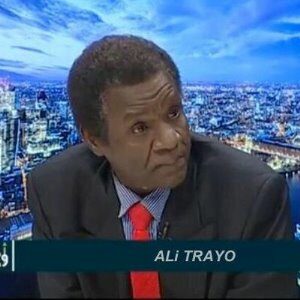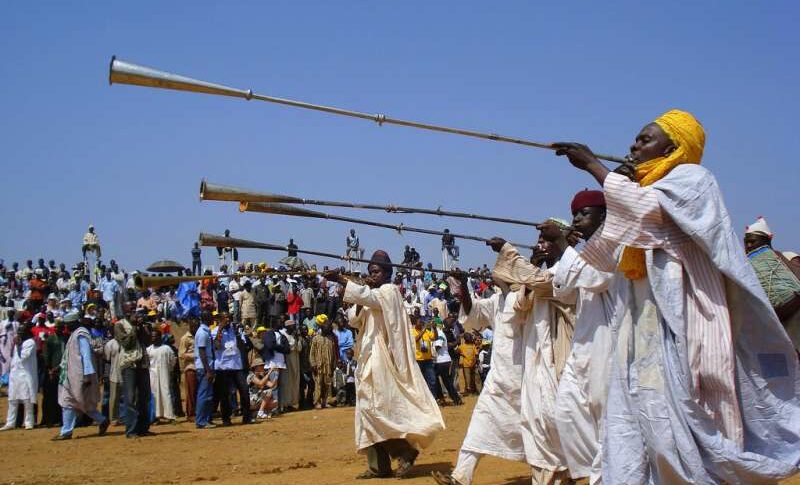About the “Hausa” people of Sudan
By: Trayo A. Ali

When the name “Hausa” came up in the midst of the recently erupted communal conflict in the Damazeen town of the Blue Nile region in Sudan, there were two fundamental issues raised. The first has been brought up by Sudanese public media on “how can one believe that Hausa people with the history of peaceful coexistence they enjoy can get involved in the inter-communal conflict”? The second has been raised by external observers (including conflict resolution experts, journalists, international organizations, diplomats….etc) as they kept asking: “whether the Hausa people are part of Sudan’s population”?
This debate has been generated by the conflict referred to above and summarized in a report by Sudanese female journalist, Ms Zeinab Mohammed Salih (published on 23 July 2022) saying that: “a demand by Sudan’s Hausa community to be recognised as traditional custodians of some land in Blue Nile state has erupted into deadly violence. More than a hundred mainly unarmed people were killed and thousands of Hausa have been driven from their homes, prompting angry demonstrations elsewhere in Sudan about their treatment”.
Similar protests were staged by Sudanese Hausa in October 2008 motivated by similar concern when the former president Omar al-Bashir was quoted by a newspaper as saying that the “Hausa community” was not indigenous to Sudan. Seven people were killed while hundreds were wounded. Al-Bashir was forced to deny making such comments as a result of these protests.
Although the Sudanese Hausa are well known for their energetic and industrious traits and perceived by the average Sudanese as an extremely calm group (to the extent of “docility”. As a non-Hausa, I have never heard or read of any incidence related to inter-communal violence in Sudan in which Hausa were mentioned as a party to it. Thus, since the evidence about such events and facts can always be sought and verified from the records, I will leave this side of the story to the judgement of others. However, as the art of conflict resolution requires an accurate definition of the parties involved, I will take up another part of the story regarding “who the Sudanese Hausa are”.
In answering “who the Sudanese Hausa”, it will be indispensable to mention their number, settlement, cultural contribution (in music, food, culture, business industry and labour) and prominent figures or leading personalities in Sudan politics.
Currently estimated in millions in terms of their population, the “Hausa” (who by virtue of their professional and occupational are mostly urban settlers) and unlike many other ethnic groups in the country, Sudanese Hausa are spread throughout the country. They are mainly concentrated in the major cities of Sudan from El-Genaina in West Darfur state, through El-Obied city of North Kordofan, Kosti, Khartoum, Sinar, Kasala, Gadarif up to Port Sudan where the Hausa have a unique residential suburb quarter known as “Hausa Zongo”.
The most remarkable and famous of these “Zongos” is the Century old quarter known as “Oshash-Falata” located in the heart of Khartoum, the capital.
As such, today every major Sudanese city enjoys a considerable number of Hausa ethnic communities. Their number, though their estimates vary wildly. However, Ms Zeinab’s report indicates that their number now ranges from three to ten million out of Sudan’s more than 44 million people.
In terms of national contribution, Sudanese Hausa, besides their participation in the Mahdi’s army against the British invasion in the nineteenth century, their ethnic community have remarkably contributed to several aspects of national building including leadership, labour force, culture, music, cuisine and sport.
Sudanese Hausa produced several prominent national figures who contributed to Sudan’s modern events including Sudan’s first Prime Minister, Mr Ismail Al-azhari whose descendent is of Hausa origin and hailed from the city of Al-Obied in the Kordofan region. Also the late Mr Rasheed Tahir Bakir (from Gadarif town in Eastern Sudan) and was a Vice President under former president Gafar Numeri is also an undisputedly “Fulani-Hausa” hybrid.
Another prominent national figure of the Hausa ethnic is the famous Sudanese female singer Aisha al-Falatiya, the first woman to sing on national radio in Sudan in 1942. Aisha became hugely popular with her love songs as well as those with political content, especially in the run-up to independence. She played a unique role when she toured the African continent during World War II entertaining Sudanese troops fighting for the British.
Constituting (and or forming) the major bulk of Sudan’s labour force (especially working in Sudan’s premier project (Gezira scheme) the Hausa people are in the record as overwhelming pioneers of the workforce in the construction of Rosairs Dam in the Blue Nile in early ninetieth century.
Believed to have introduced traditions of the fishing industry in Sudan (especially in the White Nile), today Hausa constitute the majority of the farmers in Gadarif area in Eastern Sudan as well as a considerable manual labour force in Sudan’s main port (Port Sudan).
Sudanese Hausa’s influence on Sudanese culture (especially in food, music and costume) can not be underestimated in any way.
In terms of music, Sudan’s music history can not be told without mentioning two prominent musicians of Hausa descendants; Aisha Falatya and Kamal Kela.
The celebrity “Aisha Musa Ahmed Idrees”, nicknamed Aisha Falatiya (meaning Aisha the Fulani) is the first female singer to sing on national radio in Sudan in 1942.
Another prominent Sudanese Hausa musician is Sharhabeel Ahmed who is a pioneering and first Jaz musician in Sudan.
● In terms of food, the Hausa are famous for enriching Sudanese cuisine by way of introducing and spreading several kinds of food across Sudan, including the famous “Agashie” (a tasty grilled kebabs of beef, lamb or chicken) seasoned with spices and peanuts and served with raw onions and lime juice. Today, “Agashe” remained the number one beloved street food across Sudan.
Hausa also introduced “Godogodo”. A delicious porridge loved by school children as well as old people.
It might interest to note that while the average Sudanese hardly distinguish between the Hausa, the Fulani (Falata as known in Sudan) and the Bornu, unlike the Hausa (who are generally absorbed in urban centres), the rural Fulanis have their own “Hakura” (land title) in “Tulus” while the Bornu has their own in Manwashi (both in Darfur).
To conclude, while considering all this long history with national achievements, and centuries of peaceful coexistence with others, it is strange to note that after all yet sometimes Hausa find it hard to gain acceptance within Sudanese society as indigenous!
Why these negative remarks on the “indigenously” of Sudanese Hausa, one can only view and or explain this as part of a legacy of “failure State” towards all the ethnic groups which have external extensions and ties such as the Danagila, Halfaween in the North, the Beja in Eastern Sudan, the Angasana in the Blue Nile and the Masaleet and Zaghawa in Western Sudan.

